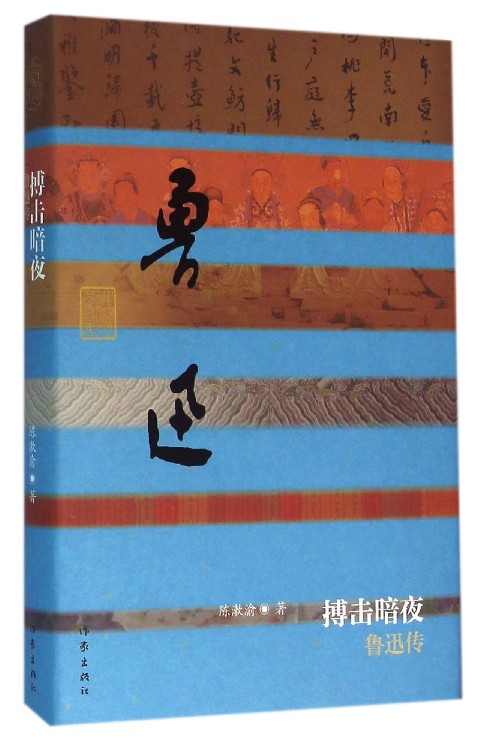Interpreting Lu Xun’s life

Fighting the Dark Night: Lu Xun’s Biography
Author: Chen Shuyu
Publisher: The Writers Publishing House
In a biography, at least two people are included: the subject and the author. The subject is revealed on the stage, while the author hides himself in the background. Readers are presented with the idea that everything the biography demonstrates comes from historical documents, but more astute readers know they are interpreted by the author after careful screening, selection and collation. Ultimately a biography is a combination of the subject’s life stories and the author’s views and idiosyncracies.
Chen Shuyu’s new book Fighting the Dark Night: Lu Xun’s Biography coincides with the 135th anniversary of Lu Xun’s birth and the 80th anniversary of his death. The book is divided into nine chapters, which describe the life of Lu Xun and are categorized according to various periods when he lived in a specific location. These include when he lived in Shaoxing (1881-1898), Nanjing (1898-1902), Japan (1902-1909), Hangzhou (Aug.1909- July.1910), Shaoxing (July.1910-Feb.1912), Beijing (Aug.1926), Xiamen (Sept.1926-Jan.1927), Guangzhou (Jan.1927-Sept.1927) and Shanghai (Oct.1927-Oct.1936). Among these, descriptions on the nine years Lu spent in Shanghai accounts for almost half of the book. Then there is the 14 years he spent in Beijing, which also accounts for a quarter of the length of the book. Then are the 18 years Lu Xun grew up in the late Qing Dynasty in Shaoxing and the seven years of his study in Japan, which respectively accounts for 25 pages and 19 pages of the book, which has 320 pages in total. These proportions roughly correlate with the various historical compilations of Lu Xun’s literature.
The author also reveals the logic and causality behind these materials in an orderly manner. For example, Lu Xun began writing after he abandoned his medical career and initiated the New Movement in Tokyo. Studies focused on this early period of Lu Xun’s works and thoughts have more disputes than agreements. The book used seven pages to sort out and confirmed all the details. Another example describes the spiritual world of the ordinary people when Lu Xun taught in Shaoxing after the success of the Revolution of 1911. The book used two and a half pages to elaborate on historical facts described two of his works: The True Story of Ah Q and Leaving the Pass.
Lu Xun spent his most productive nine years in Shanghai. This period was the time when he was most active in translation, politics and building social networks. Reflecting on these experiences, the book encountered more difficulty in presenting this period of Lu Xun’s life stories. Chen said that he failed to give a more in-depth and comprehensive analysis of Lu Xun’s works and political thought. However, despite the author’s self-deprecation, the book includes a lot of effort in this regard. Lu Xun spent nine years in Shanghai and focused on essay writing. His translation works also cover an increasingly broad range of topics, involving sophisticated perspectives and ideologies. The book devotes nearly half its content introducing Lu Xun’s experience during this period via textual analysis and intertextual theories. Despite occasional uncertainty, verification of these questions can also be read between the lines.
